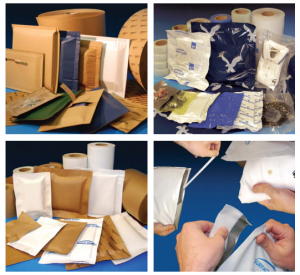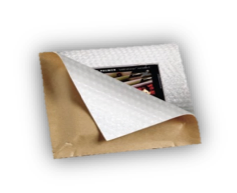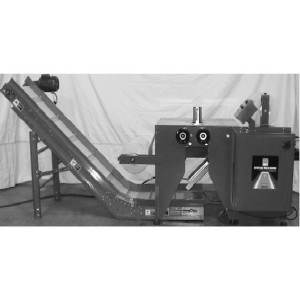How does cold seal packaging work?
You may have head about cold seal packaging and the many other names associated with the process. Cohesive packaging, self-seal adhesives, and cold seal adhesives, we're all talking about the same thing.
How does it work? It's a unique process used to seal products. Natural rubber is used in the process, along with adding resins and other additives to make them adhesive. A cold seal film is applied on each of the substrate of packaging. From that point, the adhesive goes through a drying process in which the liquid carrier gets removed.

Why cold seal packaging is helpful
Should you be using cold seal packaging in your process? It's useful for many industries including: e-commerce, retail, distribution, mailing, print and publishing, and more. The great thing about this process is that the adhesives only seal to themselves. They don't seal to the actual product or anything else, just where the adhesives come together. Cold seal materials only seal when they come in contact with other similarly coated materials. Their bond varies based on the fabrication and material holding the adhesives. The strength of the bond depends on the amount of pressure applied, time elapsed and climate factors.
 You can breakdown cold seal packaging materials into 6 categories.
You can breakdown cold seal packaging materials into 6 categories.
Cohesive single face corrugation: offers more product protection than bubble wrap packaging. Provides outstanding edge and corner protection, and is available in B, E, and Wave Flute varieties. Customizable with tear strip for easy opening.
Cohesive Linerboard: Extra heavy duty paper packaging providing increased rigidity for packaging protection. Also customizable with tear strip for easy opening.
Cohesive Paper: Economical packaging and wrapping material. Provides product protection from dust and dirt. Standard and specialty paper available.
Cohesive Film: Cohesive film is extremely flexible and lightweight. Water and puncture resistant packaging.
Returnable Cohesive Package: Great for retail applications. Perforated packaging for easy opening. Built in resealable tape for return-ability. Custom print and film available.
Cohesive Polypaper: Cohesive polypaper is a combination of film and/or paper packaging materials. Weather resistant packaging. Premium packaging appeal.
Cold seal packaging equipment
This process of sealing packages can be done by hand or with equipment. However, if you're looking for high volume, automated equipment is the way to go. Cold seal packaging equipment comes in several types including: tabletop, mini cold sealing machines, all the way to high end machines.
The System Packaging Model 200 for example is designed for low volume applications. It's a small tabletop machine that seals pre-cut sheets of cohesive material.
More advanced machines like The System Packaging Model 4500 Cold Seal Machine are intended for higher volume. This machine uses two rolls of materials to make the protective pouch. Both webs of material come together to create a v-shaped area where the products are placed. These kinds of machines will have custom funnels and can integrate into the end of the line operations.

Seal it together
Cold seal packaging eliminates the need for other packaging supplies like corrugated boxes, plastic cartons, sealing tapes, bubble wraps and more. It keeps product free of adhesive residue with its unique packaging approach. Remember, the adhesives only apply to each other and keep the product residue-free. It's great for shipping and mailing and can be customized to any packaging application. Capable of being used in machine or hand applications, cohesive cold seal products offer a reliable, durable, and versatile packaging alternative.
See also:
- eCommerce Protective Packaging: Solution Guide
- Cohesive packaging applications
- Cold Seal Packaging Equipment
Follow our Knowledge Base for the latest blogs on packaging supplies, equipment, case studies, and more ways to save money.
Follow us on LinkedIn, Twitter, and Facebook and click those share buttons below if this post helped you.


